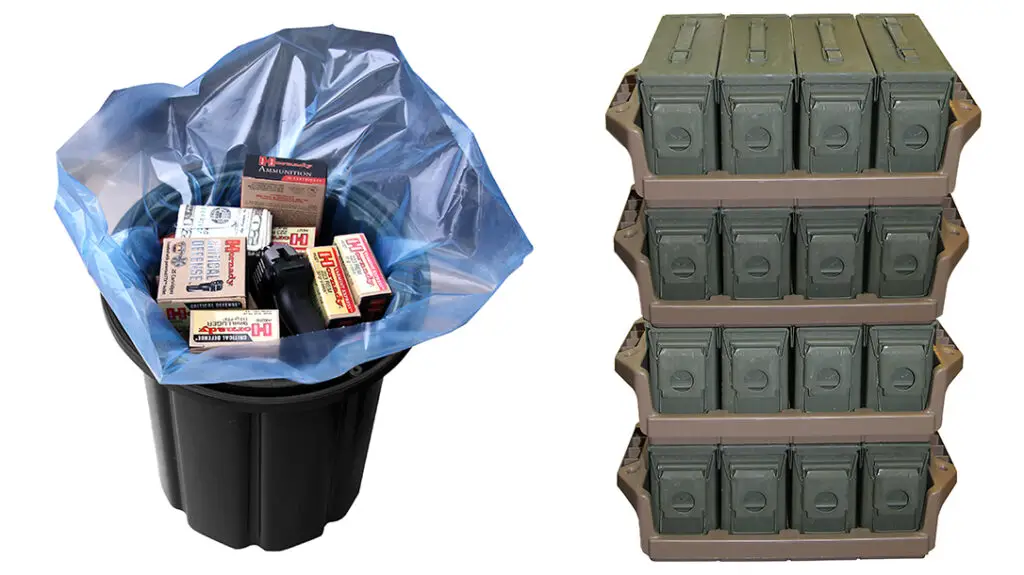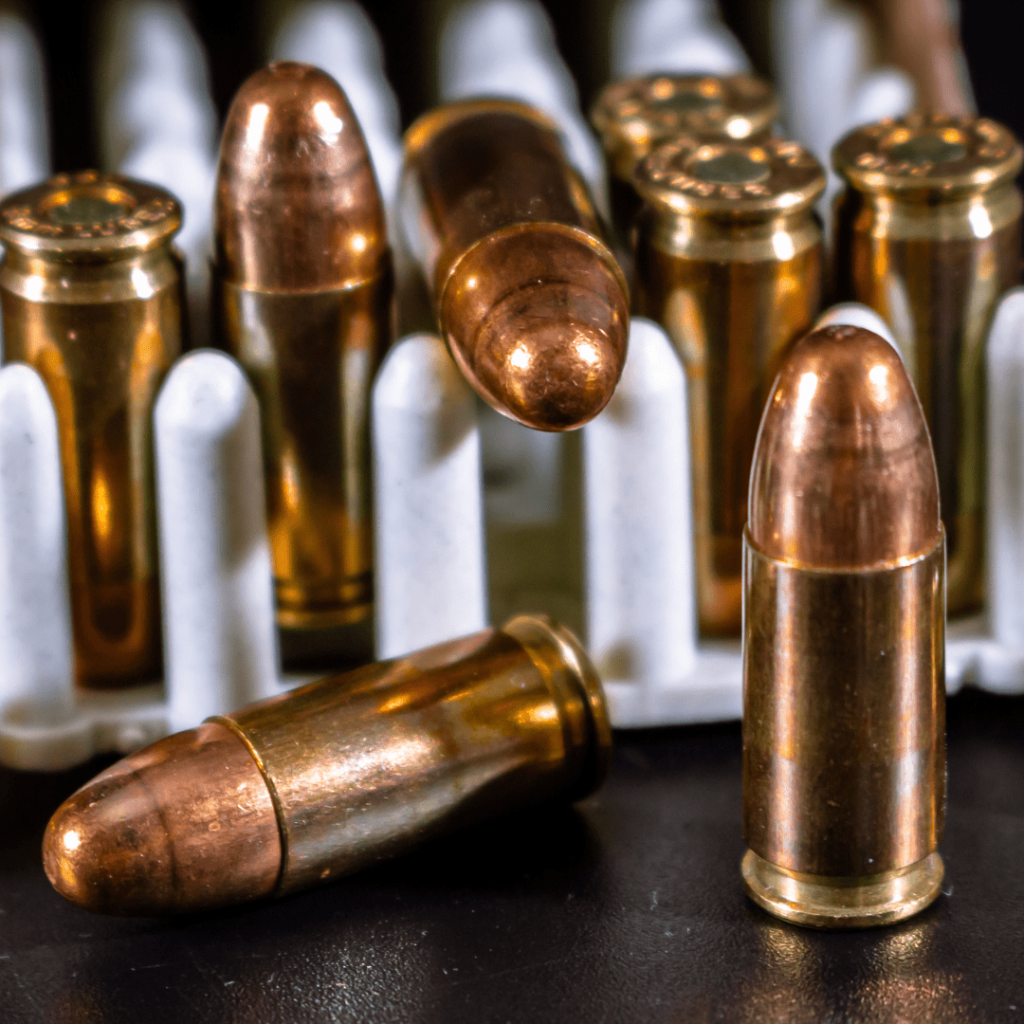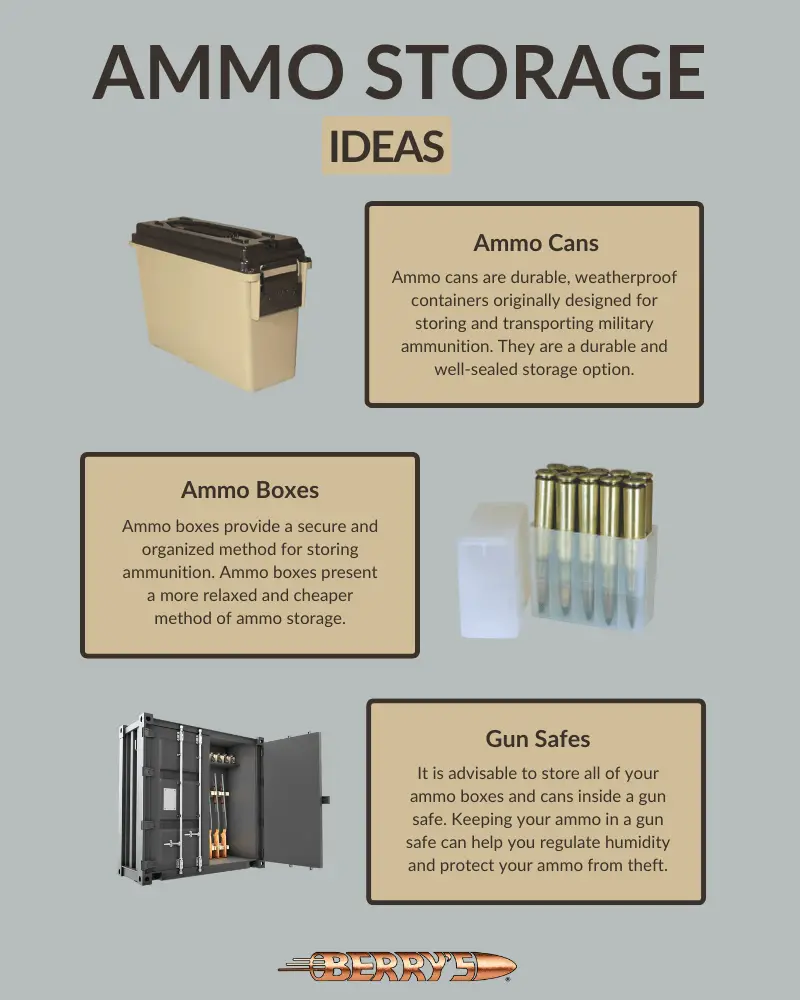When it comes to storing ammunition for the long-term, it’s important to follow best practices to ensure its safety and effectiveness. By implementing proper storage techniques, you can extend the lifespan of your ammunition and maintain its reliability. In this article, we will explore some key tips and guidelines for storing ammunition in a way that keeps it in optimal condition, promoting the longevity of your stockpile. From proper temperature control to suitable packaging materials, we’ve got you covered with the essential information you need to know. So, let’s dive in and discover the best practices for storing ammunition long-term.
Choosing the Right Storage Container
When it comes to storing ammunition long-term, choosing the right storage container is crucial. You want to ensure that your ammunition is kept safe, secure, and protected from any environmental factors that may negatively impact its quality and performance. There are a few things to consider when selecting a storage container for your ammunition.
Material
The material of the storage container plays a significant role in safeguarding your ammunition. Opt for containers made of sturdy materials such as metal or high-quality plastic that can withstand the test of time. These materials offer better protection against physical damage than flimsy or easily breakable options.
Size
Choosing the right size of the storage container is essential to efficiently store your ammunition. Consider the volume of ammunition you have and how much additional space you may need for future purchases. It’s better to have some extra room than to cram your ammunition into a container that doesn’t allow for proper organization. Additionally, a larger container allows for better air circulation, reducing the risk of moisture buildup.
Sealability
Ammunition must be stored in a container with excellent sealability. This prevents moisture, dust, and other contaminants from entering the container and affecting the quality of your ammunition. Look for containers with airtight seals to ensure maximum protection. A good seal also helps maintain the ideal temperature and humidity levels within the container, as we will discuss in the next section.
Temperature and Humidity Control
Ammunition is sensitive to temperature and humidity fluctuations, which can cause deterioration and affect its performance. Therefore, it’s crucial to store your ammunition in an environment with controlled temperature and humidity levels.
Ideal temperature
The ideal temperature for storing ammunition is usually between 55-85 degrees Fahrenheit (13-29 degrees Celsius). Extremes in temperature, whether it’s too hot or too cold, can damage the ammunition and compromise its integrity. Avoid storing ammunition in areas prone to drastic temperature changes, such as garages or attics, where temperatures can fluctuate greatly.
Relative humidity
Humidity can cause moisture to accumulate in your ammunition container, leading to corrosion and degradation of the bullets and primers. Aim for a relative humidity level between 40-50% to prevent excessive moisture buildup. To maintain this level, consider using a hygrometer to monitor the humidity inside your storage container.
Dehumidifiers
In areas with high humidity levels, it’s advisable to use dehumidifiers to reduce moisture and humidity within the storage space. Desiccant packs or electric dehumidifiers can help absorb excess moisture, ensuring a controlled and optimal environment for your ammunition.

Proper Handling and Transportation
Proper handling and transportation are crucial for maintaining the safety and integrity of your ammunition. Mishandling or using inappropriate containers during transportation can result in damage or accidents. Here are some guidelines to follow.
Avoid rough handling
Whenever you’re moving or handling ammunition, always do so with care and avoid any rough handling. Dropping or mishandling ammunition can damage the casings, primers, or projectiles, compromising their effectiveness. Treat ammunition with the same care you would with delicate objects to ensure maximum safety.
Use appropriate containers
During transportation, use containers that are specifically designed for ammunition storage, such as ammo cans or hard-sided cases. These containers provide additional protection against physical damage and help prevent any accidental discharge. Avoid using containers that are not intended for ammunition storage, as they may not provide adequate protection.
Secure during transportation
Always ensure your ammunition is securely stored during transportation. Use straps or locks to secure the containers and prevent them from moving or falling over. If transporting in a vehicle, store the ammunition in the trunk or a secure compartment away from the driver and passengers. This will help minimize any potential risks in case of an accident.
Separation and Organization
Proper separation and organization of your ammunition not only ensure easy access but also help preserve the quality of each individual cartridge. Here are some tips for effectively managing your ammunition inventory.
Keep different types separate
To prevent confusion and mix-ups, it’s essential to keep different types of ammunition separate. Separate them based on caliber, type, and manufacturer, allowing for quick identification and easy retrieval when needed. This organization reduces the risk of using the wrong ammunition for a particular firearm, ensuring safety and optimal performance.
Label and track inventory
Maintain a clear and organized inventory system for your ammunition. Label each container with accurate, legible information, including ammunition type, date of purchase, and quantity. This allows for easy tracking of your inventory and helps you identify any expired or damaged ammunition that needs attention.
Implement FIFO system
Implementing a “First In, First Out” (FIFO) system ensures that older ammunition is used or rotated before newer purchases. This helps prevent any deterioration or expiration of ammunition and ensures that you always have fresh, reliable rounds at your disposal. Arrange your storage containers accordingly, with the oldest ammunition at the front for easier access.

Fire Safety Measures
Ammunition is inherently combustible and must be stored with utmost caution to minimize the risk of fire. Here are some fire safety measures to follow when storing your ammunition.
Keep away from flammable materials
Store your ammunition away from flammable substances such as gasoline, oil, or chemicals. A small fire in the vicinity of ammunition can quickly escalate, leading to dangerous and potentially life-threatening situations. Always maintain a safe distance and ensure there are no flammable materials stored together with your ammunition.
Store in a fire-resistant area
Whenever possible, store your ammunition in a designated fire-resistant area. This can be a fire-resistant safe or locker, preferably one specifically designed for ammunition storage. Fire-resistant containers help contain any potential fires and provide an additional layer of protection for your ammunition.
Have fire extinguishers nearby
In case of an emergency, always have suitable fire extinguishers readily available near your ammunition storage area. Closely follow the manufacturer’s instructions for the proper use of fire extinguishers and ensure they are regularly inspected and maintained. Having fire extinguishers nearby can help you quickly and effectively extinguish any flames, minimizing the risk of a catastrophic incident.
Protection from Physical Damage
Physically protecting your ammunition from damage is crucial for ensuring its reliability and safety. Here are some measures you can take to prevent physical damage to your stored ammunition.
Avoid dropping or hitting
To prevent damage to the cartridges and their components, such as casings or primers, avoid dropping or hitting the containers that store your ammunition. Dropping ammunition containers can cause dents, cracks, or dislodgment of components. Always handle ammunition containers with care, ensuring they are placed on stable surfaces and away from areas with high foot traffic.
Use protective padding
If you anticipate potential bumps or impact during storage, consider adding a layer of protective padding or foam within your storage container. This additional cushioning can absorb shocks and further protect your ammunition from any accidental damage. When storing multiple containers together, place padding in between to prevent any metal-on-metal contact that could cause unwanted scratches or dings.
Store in a secure location
Choosing a secure and stable location for your ammunition storage is essential for minimizing the risk of physical damage. Avoid areas with excessive vibration, such as near heavy machinery or appliances that generate substantial vibrations. Select a stable and well-protected area, preferably away from potential hazards like falling objects or other potential sources of impact.

Regular Inspection and Maintenance
Regularly inspecting and maintaining your ammunition storage is vital to identify any signs of damage or deterioration promptly. Here are some aspects to consider during your routine inspections.
Check for moisture damage
Monitor your storage containers for any signs of moisture damage or corrosion. Look for visual cues such as rust or discoloration on casings or primers. Additionally, inspect the interior of the container for any condensation or signs of water infiltration. Detecting and addressing moisture-related issues early helps prevent further damage to your ammunition.
Inspect for corrosion
Corrosion can significantly affect the performance and reliability of your ammunition. Regularly inspect the casings, primers, and projectiles for signs of corrosion, such as pitting or a powdery residue. If you notice any corrosion, immediately address the issue or dispose of the affected ammunition following proper protocols.
Rotate stock
As part of your maintenance routine, make it a habit to rotate your ammunition stock. By using older ammunition first, you minimize the risk of cartridges deteriorating over time. Implement the FIFO system we discussed earlier to ensure rotation and avoid any wastage due to expired or unusable ammunition.
Secure Storage Locations
Securing your ammunition storage not only safeguards your investment but also prevents unauthorized access or potential theft. Here are some measures you can take to ensure the security of your stored ammunition.
Consider a locked safe
Investing in a locked safe specifically designed for ammunition storage provides an added layer of security. A locked safe not only prevents unauthorized access but also protects your ammunition from external elements, such as fire or water damage. Ensure you choose a safe that meets the necessary security standards and offers adequate space for your ammunition storage needs.
Install security measures
Depending on the level of security required, consider installing additional security measures such as alarm systems, surveillance cameras, or motion sensor lights. These measures act as deterrents and provide peace of mind, knowing that your ammunition storage area is protected. Consult with professional security experts to determine the most suitable options for your specific needs.
Restrict access to authorized personnel
Limit access to your ammunition storage area to only authorized personnel who have a legitimate need. Keep the keys or access codes to the storage location secure and known only to those individuals. This helps reduce the risk of accidental or unauthorized access, ensuring that your ammunition remains under proper control and supervision.

Ammunition Storage Laws and Regulations
Before storing ammunition, it is essential to research and adhere to local laws and regulations regarding its storage. Regulations may vary depending on your location, so it’s crucial to familiarize yourself with the specific requirements in your area.
Research local laws
Consult local ordinances, statutes, or regulations concerning ammunition storage. These laws may include requirements for the type of storage container, maximum quantities allowed, or specific security measures to be followed. Understanding and complying with these regulations is not only a legal obligation but also ensures the safety and well-being of yourself and others.
Comply with storage regulations
Once you are aware of the local laws, ensure your ammunition storage practices abide by them. Complying with storage regulations demonstrates your commitment to safety and responsibility as a firearm owner. Regularly review and update your storage practices to align with any changes or updates in the laws.
Obtain necessary permits
In some jurisdictions, you may be required to obtain permits or licenses for storing ammunition. Make sure to acquire any necessary permits and keep them readily available for inspection if required. Failing to obtain the appropriate permits can result in legal consequences and may compromise the safety and security of your ammunition.
Proper Disposal of old or Damaged Ammunition
At some point, you may need to dispose of old or damaged ammunition. It’s crucial to follow proper guidelines to ensure the safe and responsible disposal of these materials.
Contact local authorities
Contact your local law enforcement agency, firearms dealer, or hazardous waste disposal facility to inquire about the proper procedure for disposing of old or damaged ammunition. Local authorities will provide guidance on the appropriate steps to take for safe disposal in compliance with local regulations.
Follow disposal guidelines
Follow the disposal guidelines provided by the authorities or hazardous waste disposal facility. These guidelines may involve packaging the ammunition in a specific manner or dropping it off at designated collection points. Adhere to these guidelines strictly to prevent any accidents or environmental hazards during the disposal process.
Do not attempt to burn or explode
Under no circumstances should you attempt to burn, explode, or otherwise dispose of ammunition in a manner that may endanger yourself or others. Ammunition is designed to be ignited and can cause serious harm if mishandled. Always prioritize safety and follow the proper guidelines for disposing of old or damaged ammunition.
By following these best practices, you can ensure the long-term storage and proper handling of your ammunition. Storing ammunition safely not only protects your investment but also contributes to the overall safety and well-being of yourself and those around you. Stay informed, stay responsible, and always prioritize safety when it comes to ammunition storage.

